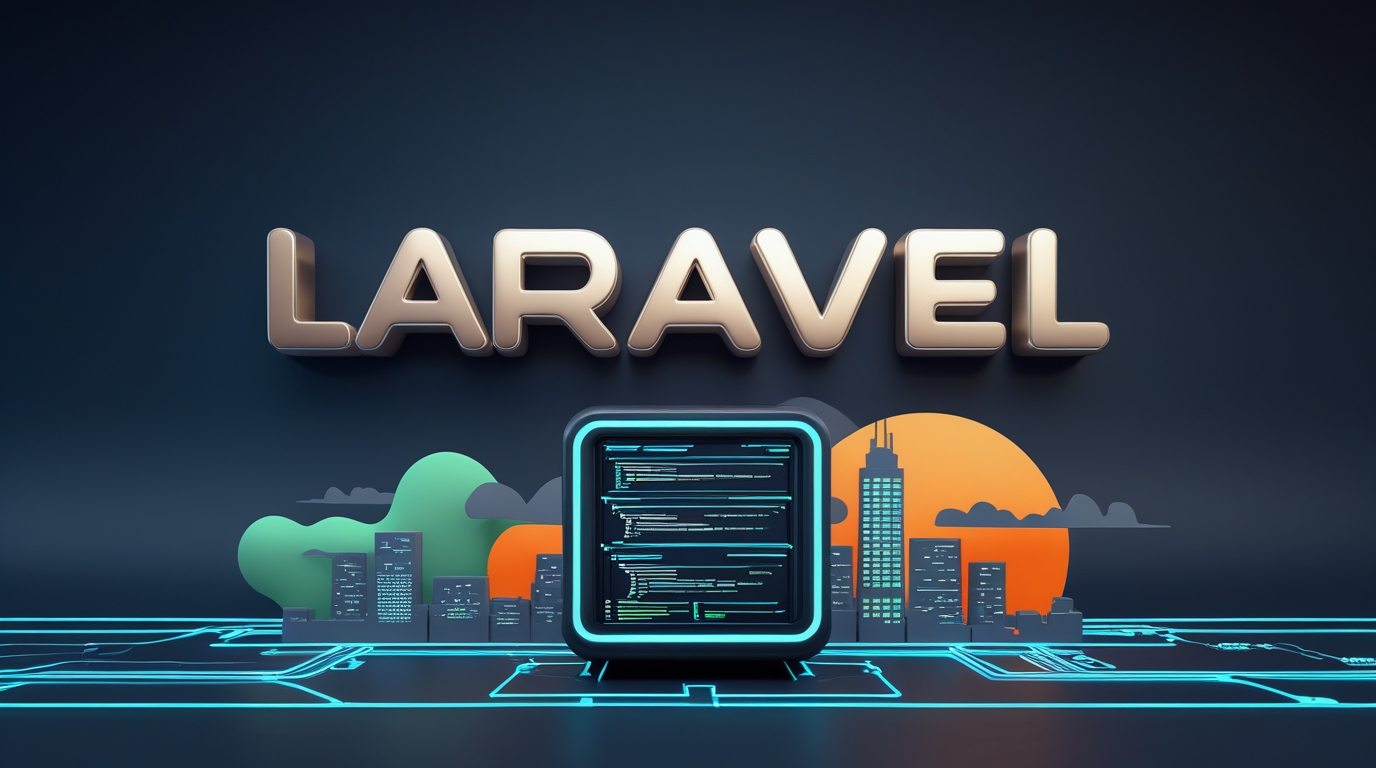In the ever-evolving world of web development, choosing the right backend framework can determine the success of your entire project. Among PHP frameworks, Laravel has emerged as a leading choice for developers and businesses alike. But is Laravel truly the best PHP framework for modern web applications, or are there scenarios where other options make more sense? This in-depth exploration of Laravel will help you decide.
1. Introduction to Laravel
Laravel is an open-source PHP framework introduced by Taylor Otwell in 2011. Built on the principles of elegance, simplicity, and readability, it follows the Model–View–Controller (MVC) architectural pattern. This makes Laravel not only developer-friendly but also highly organized and maintainable.
Key highlights:
- Clean, expressive syntax that simplifies coding.
- Built-in tools for routing, authentication, and caching.
- A thriving ecosystem and community that continuously improves the framework.
- Why Developers Gravitate Toward Laravel
Laravel’s popularity is not accidental. It offers solutions to many of the pain points developers face when creating complex applications.
2.1 Rapid Development
Laravel provides scaffolding tools such as Artisan CLI, which speed up repetitive tasks like database migrations, model creation, and controller setup.
2.2 Robust Security
From password hashing to CSRF protection, Laravel offers strong security features out of the box, reducing the need for third-party plugins.
2.3 Scalability
With the ability to integrate caching backends like Redis and Memcached, Laravel applications can scale efficiently to meet growing user demands.
- Core Features That Set Laravels Apart
Laravel stands out because of its rich feature set. Understanding these core functionalities will clarify why it is a go-to framework.
3.1 Eloquent ORM
Eloquent provides a simple ActiveRecord implementation for database management, allowing developers to interact with databases using elegant PHP syntax instead of raw SQL.
3.2 Blade Templating Engine
Blade is Laravel’s lightweight yet powerful templating engine. It lets you reuse layouts and inject dynamic content easily without sacrificing performance.
3.3 Routing
Laravels’s routing system is straightforward, offering clean URLs and easy configuration. Developers can define routes with minimal code.
3.4 Middleware
Middleware layers allow developers to filter HTTP requests, making tasks like authentication and logging seamless.
3.5 Queues and Background Jobs
Laravel’s queue system helps defer time-consuming tasks such as sending emails or processing uploads, improving application responsiveness.
- Laraveol’s Ecosystem and Tools
Laravels is more than a framework; it’s a full ecosystem. Some of the standout tools include:
- Laravel Forge: Server management and deployment platform.
- Envoyer: Zero-downtime deployment tool.
- Laravel Vapor: Serverless deployment on AWS.
- Nova: A beautifully designed administration panel for managing app data.
- Homestead: A pre-packaged Vagrant box for local development.
These tools streamline development, hosting, and maintenance, offering a one-stop solution for modern applications.
- Common Use Cases for Laravels
Laravel’s versatility makes it suitable for a wide range of applications:
- Enterprise-grade systems: Internal portals, CRM platforms, and complex back-office tools.
- E-commerce websites: With built-in support for scalability and security, Laravels is excellent for online stores.
- API-driven apps: Laravels’s API resources simplify building RESTful services.
- SaaS platforms: Subscription-based services benefit from Laravel’s authentication and billing integrations.
- Laravel vs. Other PHP Frameworks
Laravel is often compared to other PHP frameworks such as Symfony, CodeIgniter, and Yii.
- Symfony: Extremely flexible and stable, but has a steeper learning curve.
- CodeIgniter: Lightweight and fast, but lacks Laravels’s modern features.
- Yii: Good for high-performance apps, but the community is smaller.
Laravels strikes a balance between power and simplicity, making it a favorite for developers who want rapid development without sacrificing robustness.
- Advantages of Using Laravel
Laravel’s advantages go beyond its feature list.
7.1 Developer Productivity
With tools like Artisan and built-in testing, developers can deliver projects faster.
7.2 Strong Community Support
Laravel boasts a large, active community. Countless tutorials, packages, and forums ensure help is always available.
7.3 Cost Efficiency
Rapid development and ready-to-use packages reduce overall project costs.
7.4 Built-In Testing
Laravel integrates PHPUnit, enabling automated testing for everything from routes to database interactions.
- Potential Drawbacks to Consider
No framework is perfect, and Laravel is no exception.
- Learning Curve: Beginners might find it challenging at first, especially if they are new to MVC patterns.
- Performance Overhead: For extremely lightweight projects, Laravel’s comprehensive features might feel heavy compared to micro-frameworks like Lumen or Slim.
- Frequent Updates: While updates keep Laravel modern, they can also require developers to stay on top of changes.
- Real-World Success Stories
Many prominent brands and startups use Laravel, including:
- 9GAG for social entertainment.
- Razorpay for payment solutions.
- Alison for online education.
These examples prove Laravel can power everything from high-traffic social platforms to secure financial applications.
- Laravels for Modern Trends
As technology evolves, Laravel keeps pace:
- Microservices and APIs: Laravels works seamlessly with microservices architecture and API-first development.
- Serverless Deployments: Laravels Vapor allows developers to deploy on AWS Lambda without managing servers.
- Integration with Frontend Frameworks: Vue.js, React, and Inertia.js pair well with Laravels for modern full-stack apps.
- Best Practices When Developing With Laravels
To make the most of Laravels, follow these best practices:
- Use Version Control: Git ensures smooth collaboration and rollback.
- Follow MVC Strictly: Keep controllers slim and business logic in models or services.
- Optimize Performance: Use caching, queues, and eager loading to handle heavy traffic.
- Keep Dependencies Updated: Regularly update Composer packages to patch vulnerabilities.
- Learning Laravel: Resources and Tips
For newcomers, the Laravel learning curve is manageable with the right resources:
- Official Documentation: Comprehensive and beginner-friendly.
- Laracasts: Often called “the Netflix for developers,” it provides video tutorials.
- Community Forums & Discord: Get support directly from experienced developers.
- Future of Laravel
The Laravel ecosystem continues to grow. Features like Octane for high-performance apps and Livewire for reactive components ensure Laravel stays relevant in the rapidly changing tech landscape.
- Should You Choose Laravels?
So, is Laravel the best PHP framework for modern web apps? The answer depends on your needs:
- For complex, scalable applications requiring rapid development and strong community support, Laravels is hard to beat.
- For lightweight projects where performance and minimalism are critical, a micro-framework might suffice.
Ultimately, Laravels offers a balanced combination of elegance, power, and community, making it an excellent choice for most modern web development projects.
Conclusion
Laravel has proven itself as a reliable, feature-rich, and forward-looking PHP framework. Whether you are building a small SaaS platform, an enterprise-level CRM, or a high-traffic e-commerce site, Laravel provides the tools, documentation, and scalability you need.
The question isn’t just “Is Laravels the best PHP framework?”—it’s “Is Laravel the right framework for your next big idea?” After exploring its features, advantages, and potential drawbacks, the answer for many developers and businesses is a confident yes.


Leave a Reply